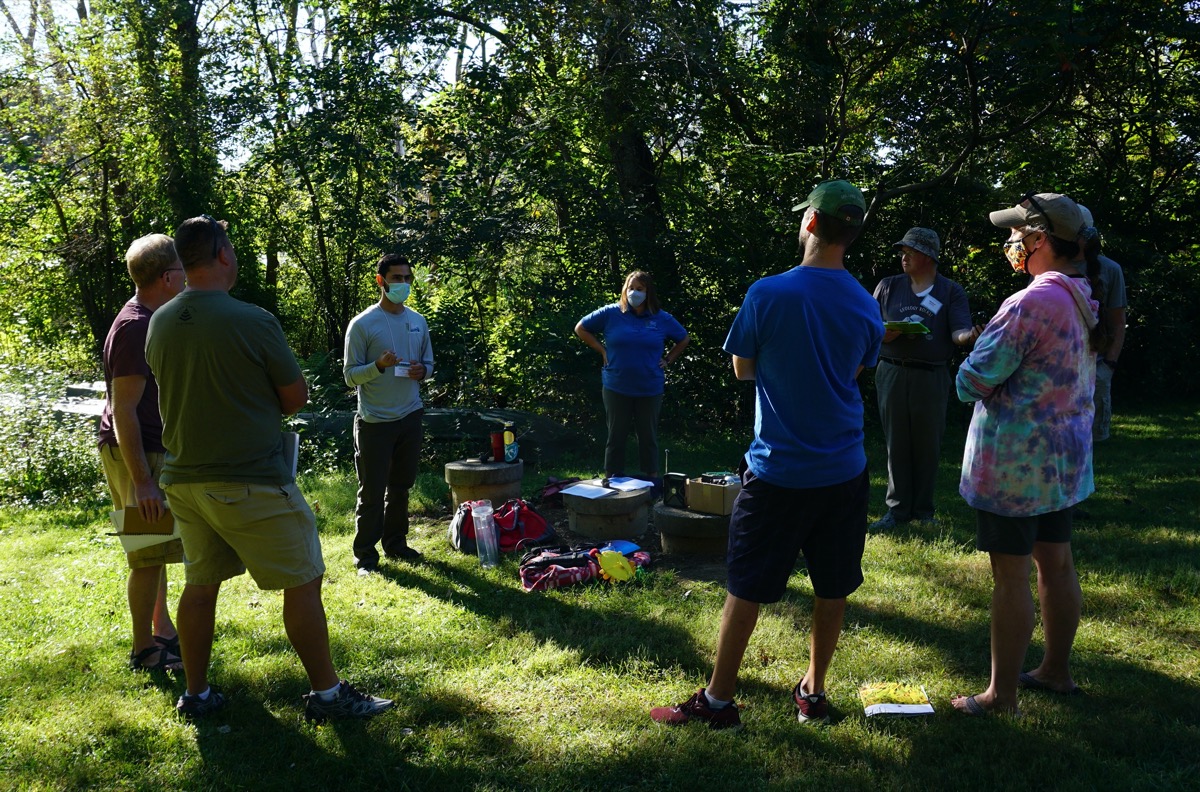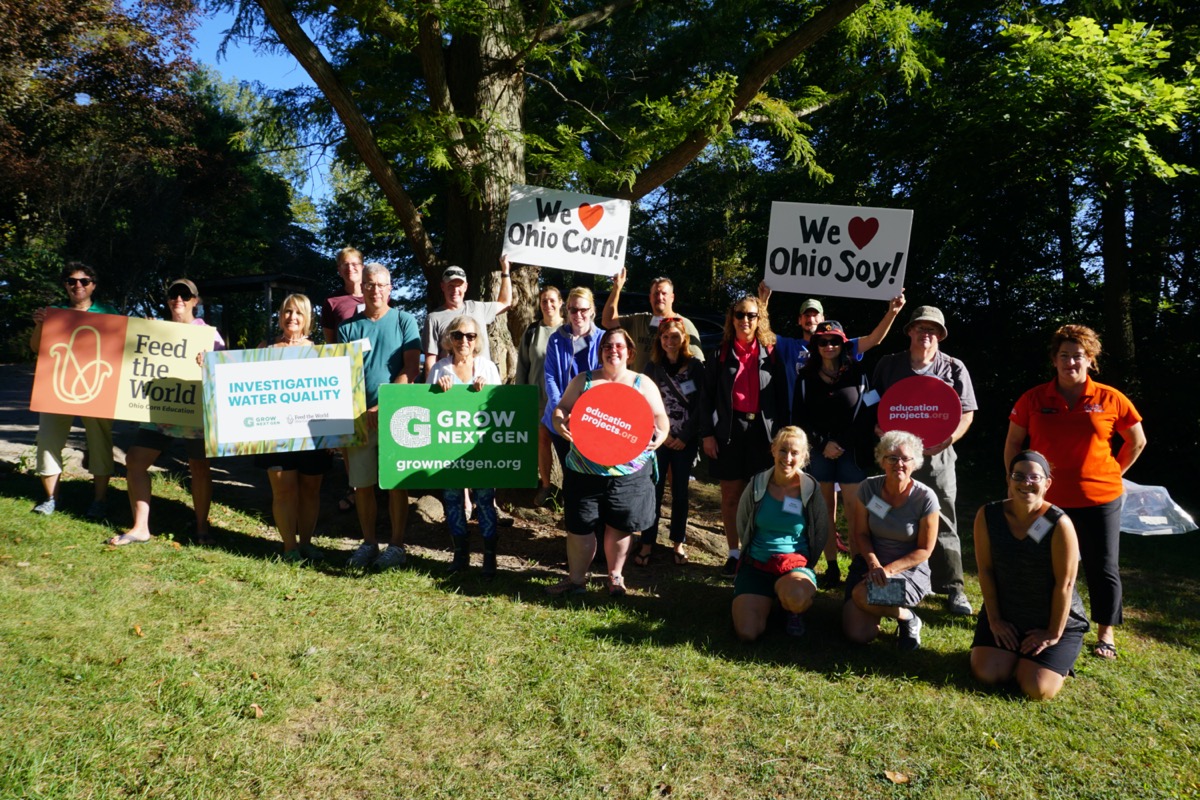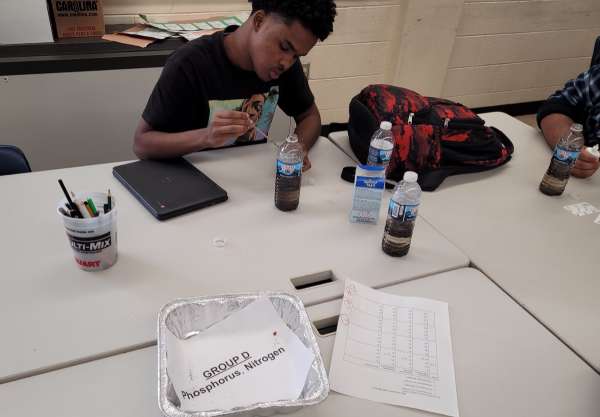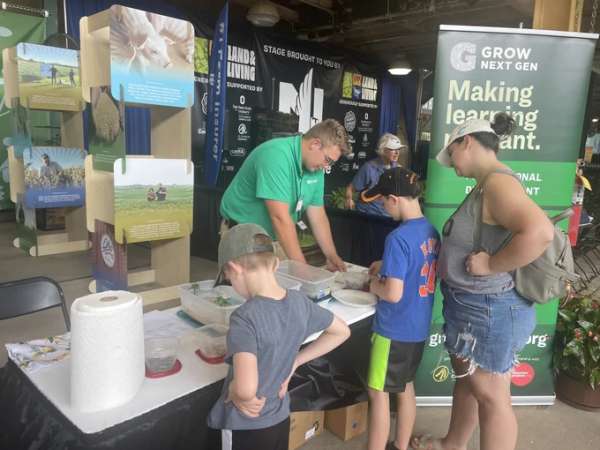What’s an estuary? A place where two chemically-distinct bodies of water meet and mix. Teachers visited a Lake Erie estuary in the Investigating water quality workshop, presented by Ohio Soybean Council and Ohio Corn & Wheat. Water quality is a hot topic in Ohio right now, and this workshop gave teachers the opportunity to learn about assessing water quality and how farmers are working to maintain and improve water quality.
The workshop began at Old Woman Creek Reserve’s Visitor Center, where participants learned about the Reserve, the work done there, and activities and resources provided by the reserve. Then the group traveled to the Boat House for three break-out activities.
Old Woman Creek (OWC) staff members Sebastian Mejia and Jennifer Bucheit talked about weather monitoring and how to analyze long-term weather data to determine trends. Using handheld weather sensors, teachers gathered data and learned about other monitoring initiatives that can be incorporated in the classroom.

In another group, teachers observed net plankton in water samples from the mouth of the estuary, upstream, and from the lake. OWC staffer Steven McMurray talked about the importance of plankton as the base of the food web as well as the source of 56% of the oxygen in the air.

The third group worked at a stream simulation, doing chemical testing of various water samples. They also learned how the presence of certain macroinvertebrates indicate water quality levels. Participants added suggestions such as creating a virtual version of the stream simulation using Google slides and contacting local water treatment facilities to learn more about their testing practices.

After a lunchtime conversation about H2Ohio with industry experts, teachers went through a topographic maps activity to identify what contributes to drainage areas of lakes.
The day wrapped up with data analysis using information gathered over 40 years at Old Woman Creek Reserve. Mejia demonstrated how to use a spreadsheet as a tool to visualize data, rather than just looking at numbers. Everyone went away with great lessons to use in their classroom and supplies to support that work.
Be sure to check out our water quality e-learning course!





Share this